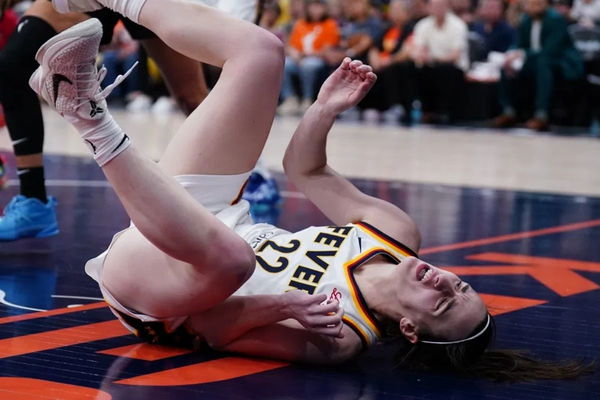
via Imago
Credits: Imagn

via Imago
Credits: Imagn
For most of Caitlin Clark’s career, the adage, “Availability is the best ability,” couldn’t have been more true. Before the 2025 WNBA season, she hadn’t missed a single game through college and even her rookie year. But this season has been different. Injuries limited her to just 13 games, and even when she played, she wasn’t quite her lofty self. Sure, the physicality of the game takes its toll, but according to Chicago-based sports medicine doctor Dr. Jeremy Alland, there might be a deeper issue behind Clark’s injury struggles.
Speaking on the Chicago Now segment of Fox 32 Chicago, Dr Alland said, “Now with the AAU and the way that’s going, I mean, there’s kids that are playing almost more than like NBA basketball players are playing in a given year. So by the time they hit 18, 19, 20-25 years old, they’ve put on so much more mileage than all of the athletes back in the 80s and 70s had done. And there’s no denying that that’s contributing to this in some fashion.”
Throughout her college career, Caitlin Clark played 139 games for the Iowa Hawkeyes, consistently serving as the team’s star and drawing the most defensive attention on the court. Even before college, she was a standout multi-sport athlete at Dowling Catholic High School in Des Moines, excelling in basketball, soccer, softball, and more, with some coaches believing she had the talent to go pro in multiple sports. She chose basketball, but the versatility also added significant mileage to her legs over the years. And as Dr. Alland pointed out, such early and sustained physical demands can take a toll that isn’t easily countered later, even with strategies like load management.
ADVERTISEMENT
Article continues below this ad
He said, “In terms of load management, which was a great question, most of that data has more or less has shown that it hasn’t helped out a lot. So, I’m not saying it’s not worth it to load manage people, but at the same time we’re trying to figure out how we keep these guys on the floor and in this case, Caitlin Clark on the floor. How do we make it so they can make it so that they can perform at their highest level, have less injuries? I think from my perspective, we have to look at it before they’re 18 years old and how we manage those loads.”
There’s no substitute for live-game experience when it comes to developing players, but there has to be a balance between gaining that experience and managing fatigue. In a sport like basketball, where players often don’t even get proper practice time during the season, let alone rest, that balance is crucial. As Dr. Jeremy Alland pointed out, maybe the solution lies earlier– at the amateur level, so athletes aren’t carrying years of accumulated strain into their professional careers. Otherwise, all the hard work they put in could be undermined by injuries before they even reach their full potential.
ADVERTISEMENT
Article continues below this ad
But while the physicality of the game is an obvious factor, the WNBA’s compressed scheduling has also been called into question as a factor in having Clark ruled out for the season.
Did the WNBA’s scheduling play a part in Caitlin Clark’s injury?
Traditionally, the WNBA season ran from May to September, which fit neatly between the NBA and NFL offseasons. But with the addition of the Golden State Valkyries this season, each team now plays 44 games without extending the overall schedule. The result? Fewer rest days: down from an average of 4 days between games in 2021 to just 2.7 this season (not even counting travel).
ADVERTISEMENT
Article continues below this ad
Looking ahead, the league plans to expand further, with Portland Fire and Toronto Tempo joining next season and three more teams expected by 2030. While this growth is exciting, it also raises concerns. If star players continue facing shortened seasons and injuries, the league risks losing out on both talent and revenue. Caitlin Clark, in particular, has been a major driver of viewership, ticket sales, and overall fan engagement, making her absence especially costly for the WNBA.
What’s your perspective on:
Is the WNBA's tight schedule to blame for Caitlin Clark's injury woes this season?
Have an interesting take?
With mounting concerns from players and coaches alike, the responsibility now falls on WNBA commissioner Cathy Engelbert to find a solution that protects both the athletes and the league’s long-term prospects.
ADVERTISEMENT
ADVERTISEMENT
ADVERTISEMENT
ADVERTISEMENT



Is the WNBA's tight schedule to blame for Caitlin Clark's injury woes this season?